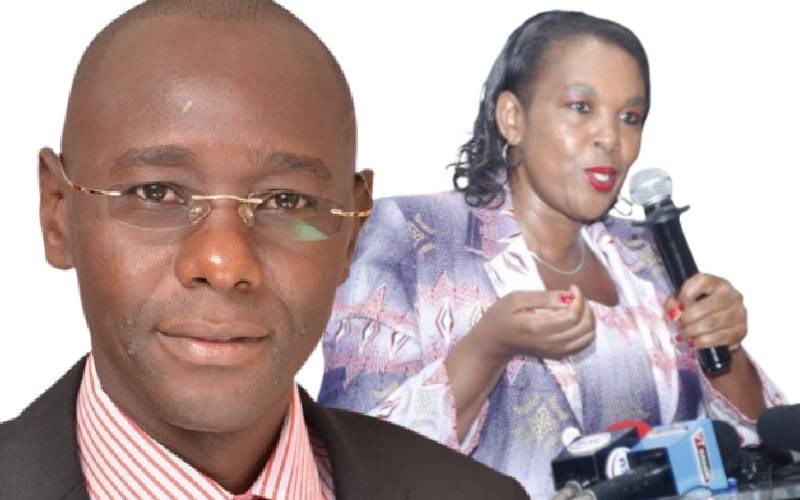Another five-year electoral cycle is coming to an end with the same speed as the rapidity with which changes in the education sector are being proposed and promulgated. Since independence Kenyans have dreamt of a technological Valhalla land equalling, if not better than, the best in the world. The reasons we have missed the target for more than half a century are as many and varied as the hues of our wildflowers. But chief among them is the singular lack of a unified national vision and a recurrent malaise of misplaced priorities.
Technological goals are attainable when a nation has a clear understanding of what it takes to get there. It must also have the human and material resources to implement a program of educating, training and mentoring its youth to meet the challenges presented by a transition from a backward third world country to a fine-tuned and smoothly-running developed nation.
Short-sighted political ambitions and a lack of a national psyche has been Kenya’s main undoing in its endeavour to reach technological maturity. Like one of those broken vinyl records of yore, the needle seems to fall back into a specific groove whenever a regime change occurs. Each political regime wants to impose some fangled education system by which it hopes to be remembered in posterity. Education, in general, is part of a never-ending continuum and not a start-stop gadget we in Kenya and the rest of Africa love to imagine.
Immediately after the 1964 Ominde Commission and egged on by the Tom Mboya-J F Kennedy ties, efforts were made to fast track Kenya into the technological stratosphere by replicating the Science Technology Engineering and Mathematics (STEM) programs then in place in the United States. These programs were developed at the Massachusetts Institute of Technology as a response to the Soviet Union’s apparent superiority in the late 1950s Space Program.
Starting from 1968 Form One students were taught exotic stuff such as topology ‘rubber-sheet geometry’ set theory, ‘venn diagrams’ and such like. These topics were part of the ‘New Mathematics’ which unfortunately did not survive beyond 1975 as Kenya’s education system underwent change as a response to a shift in political ideologies of the time.
And so for the last 40 years, Kenya has shunned investment in STEM and instead allowed the mushrooming of numerous liberal arts, humanities, and social science educational facilities. Even the University of Nairobi established with funding from the Indian Community as a technology-based institution has in due time undergone a 180-degree shift and now has far fewer STEM programs than it ought to. The Second University, dubbed so by the McKay Commission and now called Moi University was supposed to be a technology-only university. Right from its inception, it made an about-turn and its student population is now 70% Education, Business and Arts with STEM taking up the miserly 30% remainder.
Like in almost every public institution top managers and policymakers love taking the easier option. It is said that water takes the path of least resistance! It is so much easier to put up impressive edifices that draw outside attention to the institution but with empty cavernous halls. It is much harder and takes true passion to build well equipped workshops, laboratories, animal houses, aquaria, state of the art simulators etc.
This malaise is repeated in every university in the land. Even Ivy-League style private universities with excellent facilities, top-notch professors, and some of the best teacher-student ratios on the continent have given STEM a wide berth.
For as long as the status quo remains we can kiss Vision-2030 goodbye. It is just going to remain a fantasy etched in the mind of the founder.
 The Standard Group Plc is a
multi-media organization with investments in media platforms spanning newspaper
print operations, television, radio broadcasting, digital and online services. The
Standard Group is recognized as a leading multi-media house in Kenya with a key
influence in matters of national and international interest.
The Standard Group Plc is a
multi-media organization with investments in media platforms spanning newspaper
print operations, television, radio broadcasting, digital and online services. The
Standard Group is recognized as a leading multi-media house in Kenya with a key
influence in matters of national and international interest.
 The Standard Group Plc is a
multi-media organization with investments in media platforms spanning newspaper
print operations, television, radio broadcasting, digital and online services. The
Standard Group is recognized as a leading multi-media house in Kenya with a key
influence in matters of national and international interest.
The Standard Group Plc is a
multi-media organization with investments in media platforms spanning newspaper
print operations, television, radio broadcasting, digital and online services. The
Standard Group is recognized as a leading multi-media house in Kenya with a key
influence in matters of national and international interest.







